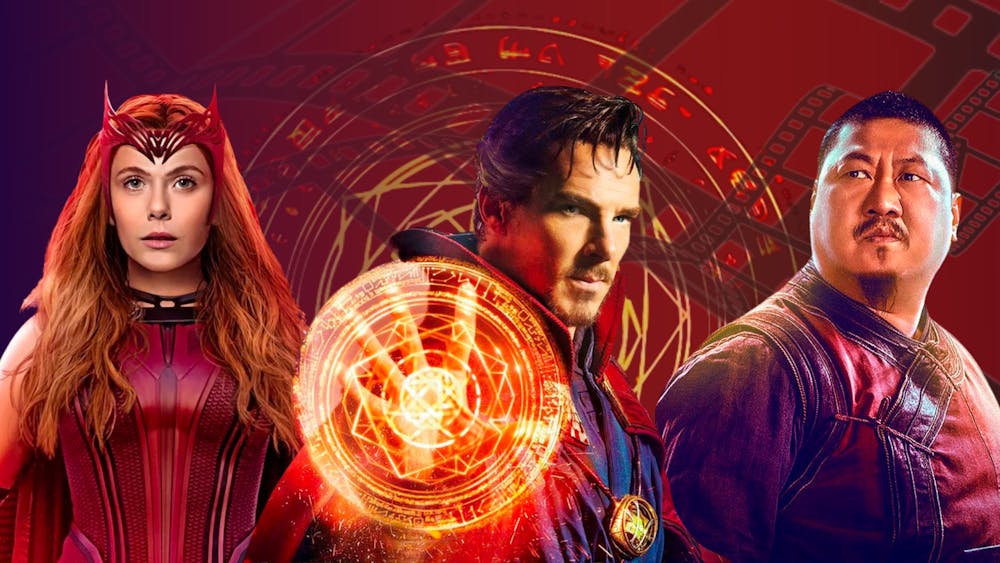As an avid Marvel movie fan since my preteen years and a loyal follower of the Disney+ shows, I’ve been ecstatic for the release of the newest Dr. Strange movie, Dr. Strange: Multiverse of Madness. Going in, I’d been intentional about avoiding spoilers or any news whatsoever. I didn’t want to know what was going to happen. I didn’t even want to know who the villain was. I had hoped that the movie would be good, seeing the upwards trajectory that the past few Marvel shows and movies had been taking, such as Loki, Moon Knight, and Shang–Chi and the Legend of the Ten Rings.
Marvel movies tend to have a few key things in common: they’re usually PG–13 and catered to a younger audience, and they have a hero who's usually in a well–crafted costume that’s recognizable from miles away. Some might even say they have too many action sequences and battle scenes, although with impressive CGI shots.
Initially, Dr. Strange: Multiverse of Madness planned to break the Marvel mold, as director Sam Raimi aimed for it to be Marvel’s first “horror” film. But while it had some horror elements, such as Wanda’s witchcraft and possession capabilities, it was still, more than anything, just another Marvel movie.
And while overall, as a movie, it was good, I questioned whether my positive perception of the film was truly due to a strong plot and character development, or instead due to the shock value that Marvel sometimes relies too heavily on.
Shock value typically pokes its head in Marvel movies through dramatic plot twists and unexpected character cameos. The most famous of these was the end of Avengers: Infinity War, where Thanos’s snap actually ended up killing half of the universe’s population, including many of our favorite heroes. The follow–up to Infinity War, Avengers: Endgame, ended up being the highest–grossing Marvel film. This was in part because the previous film’s cliffhanger left fans eager to know what would happen next, but its popularity was also because of the wide cast of characters, many of who dramatically returned to life in the final battle scene against Thanos.
More recently, Spider-Man: No Way Home, Marvel’s second highest–grossing film, included multiple scenes that caught viewers by surprise as Spider–Men from entirely different movies, such as the versions played by Andrew Garfield and Tobey Maguire, showed up one by one. While I don’t think shock value is the only thing that made this movie an entertaining watch, I do think it played a large role in its success.
After watching No Way Home, I tried to picture the same movie but without the appearances of Garfield and Maguire. Just the thought that either of these actors would be in the movie led to millions of fan theories before the film even came out. Now, thinking back to watching it, part of my positive experience of the movie came from those little bursts of excitement I felt each time a new "Spidey" appeared.
While it’s hard to definitively quantify the impact of multiple Spider-Men on the success of the movie, I don’t think it’s a coincidence that this movie was widely discussed online and was high–grossing compared to other Marvel movies.
Similarly to No Way Home, Dr. Strange had a couple of shock value moments where completely unexpected characters appeared in unpredictable ways. Both incorporated characters that viewers wouldn’t have expected to see in their films. An example that comes to mind is when Dr. Strange transports to a new universe led by a council of five superheroes: Peggy Carter from the “What If…” Disney+ episode where she becomes Captain America, Fantastic Four’s Reed Richards, Black Bolt (also known in the comics as the King of the Inhumans), Karl Mordo, an old rival of Strange’s, and Professor X from the X–Men franchise. On top of this being a peculiar cast of characters, they call themselves the "Illuminati."
Usually, my issue with Marvel movies is their predictability, but with Dr. Strange, it almost feels as though it was taken too far in the opposite direction in an attempt to imitate the shock value No Way Home. Similar to No Way Home, they featured characters and actors that you would never expect to see in the movie. And while seeing this misshapen group did cause me to frantically grab my friend and point to the screen while whispering eagerly, the excitement quickly wore off.
I don’t think shock value in movies is a bad thing—it combats predictability and gets viewers talking about it. At the same time, movies should not depend on it in order to be good or include it to simply to get people talking. While, yes, Dr. Strange did have a decent plot with a villain who, once again, was in a bit of a morally gray area where her motivations were not completely unreasonable, it didn’t need to incorporate scenes like the one with the so–called “Illuminati.” Rather than spending time and money on expensive actors to generate fan buzz, Marvel should focus more on churning out unique plots that don’t follow their classic tropes.

